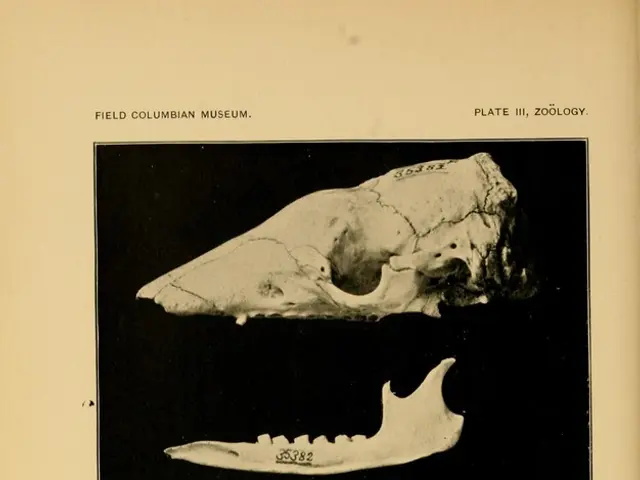Classification and Characteristics of Precious Gems
In the world of gemstones, understanding their classification is crucial for identification, valuation, and appreciation. Modern gemstone classification employs a combination of advanced scientific methods and traditional gemological techniques to enhance accuracy in identification and valuation.
Modern gemologists begin by determining a gem's chemical makeup, which serves as the foundation for classification. For instance, diamonds consist of carbon, while rubies and sapphires are varieties of aluminum oxide (corundum). This fundamental differentiation helps distinguish gemstones at the species level and guides further analysis.
Determining the crystal system (e.g., cubic, trigonal, monoclinic) is another essential step in classification. The crystal habit, such as diamonds frequently forming octahedrons, is also observed.
Physical and optical properties are critically measured to identify a gemstone. Color is analysed by hue, tone, and saturation. The refractive index and birefringence are crucial for light behaviour in the gem. Luminescence and absorption spectrum provide spectral fingerprints, while specific gravity, hardness, cleavage, and fracture are physical tests often confirming identity. Optical phenomena and pleochroism (color change with viewing angle) also aid identification.
Inclusions and internal characteristics are assessed for authenticity and origin, helping to differentiate natural gems from synthetics or treated stones. A traditional but still relevant descriptive grading, known as "water" grading (luster and transparency), is also used, with the quality of transparency corresponding to gem value.
Cutting and faceting analysis are crucial for understanding a gemstone’s brilliance, fire, and scintillation. Precision cuts, measured to minute tolerances, influence a gemstone’s brilliance and consequently its market value. Modern understanding of light behaviour and geometry allows optimization of optical appeal.
Advanced identification techniques for synthetics and treatments are particularly important, enhancing detection accuracy. Understanding a gemstone's crystal structure can be vital for identification and can even reveal whether the gem has been treated or altered in any way.
Compared to solely traditional visual and descriptive methods, modern gemstone classification integrates chemical, physical, and optical analysis with advanced faceting science and synthetics detection. This multi-faceted approach yields far more accurate identification and fair valuation.
The silicate, oxide, and carbonate families are significant gemstone families, each with unique characteristics. Understanding a gemstone's hardness can help determine its practical applications and durability. Emeralds belong to the beryl mineral family and get their green color from trace amounts of chromium and vanadium. They are relatively soft compared to diamonds, usually scoring between 7.5 and 8 on the Mohs scale.
X-Ray Diffraction is a technique that involves directing X-rays at a gemstone and then measuring how they scatter upon hitting the stone. It can reveal the arrangement of atoms within the gem, providing insights into its crystal structure.
Luster is a critical factor in determining a gem's beauty and value, with various types like metallic, vitreous, and pearly. Understanding a gemstone's crystal structure can be vital for identification and can even reveal whether the gem has been treated or altered in any way.
Carbonates, specifically Calcite and Aragonite, are two well-known examples of a gemstone family. They are generally softer and more porous than other gem families, making them less suitable for high-impact jewelry like rings, but popular for collectors and pendants/earrings due to their affordability and unique textures.
The Mohs scale of hardness ranges from 1 (softest) to 10 (hardest), with diamonds at the top. Soft stones like opals and pearls require special care, as they are more fragile than harder gemstones. Avoid exposing them to harsh chemicals or extreme temperatures, and use appropriate cleaning methods.
Natural gemstones are formed over millions of years, while synthetic gemstones are created in labs. Diamonds are made entirely of carbon atoms arranged in a crystal structure known as a diamond lattice. They are the hardest known natural material, scoring a perfect 10 on the Mohs scale.
Modern technology offers more precise methods like spectroscopy and X-ray diffraction. Spectroscopy is a technique that involves shining a light through a gemstone and analyzing the spectrum of colours that come out on the other side. It is particularly useful for identifying trace elements in a gemstone, which can be crucial for determining its origin and value.
Synthetic gemstones are less expensive and can be flawless, with larger quantities produced. However, natural gemstones are generally more valuable due to their rarity and unique formations. Rubies are a variety of the mineral corundum, just like sapphires. What sets them apart is their vibrant red color, which comes from trace amounts of chromium. They are also quite hard, scoring a 9 on the Mohs scale, making them durable choices for all types of jewelry.
In the realm of health-and-wellness, understanding the chemical composition and trace elements in nutrients is crucial for identification, valuation, and appreciation, similar to gemstones. For instance, diamonds in a nutritional context may symbolize essential minerals like calcium, while rubies and sapphires could represent nutrients like iron and zinc, each with unique benefits for fitness-and-exercise and overall health.
Just as gemologists analyze a gem's crystal system to refine its classification, health professionals examine a nutrient's molecular structure to better understand its functions and interactions within the body. This fundamental differentiation can help distinguish nutrients at the biological level and guide further dietary analysis.




